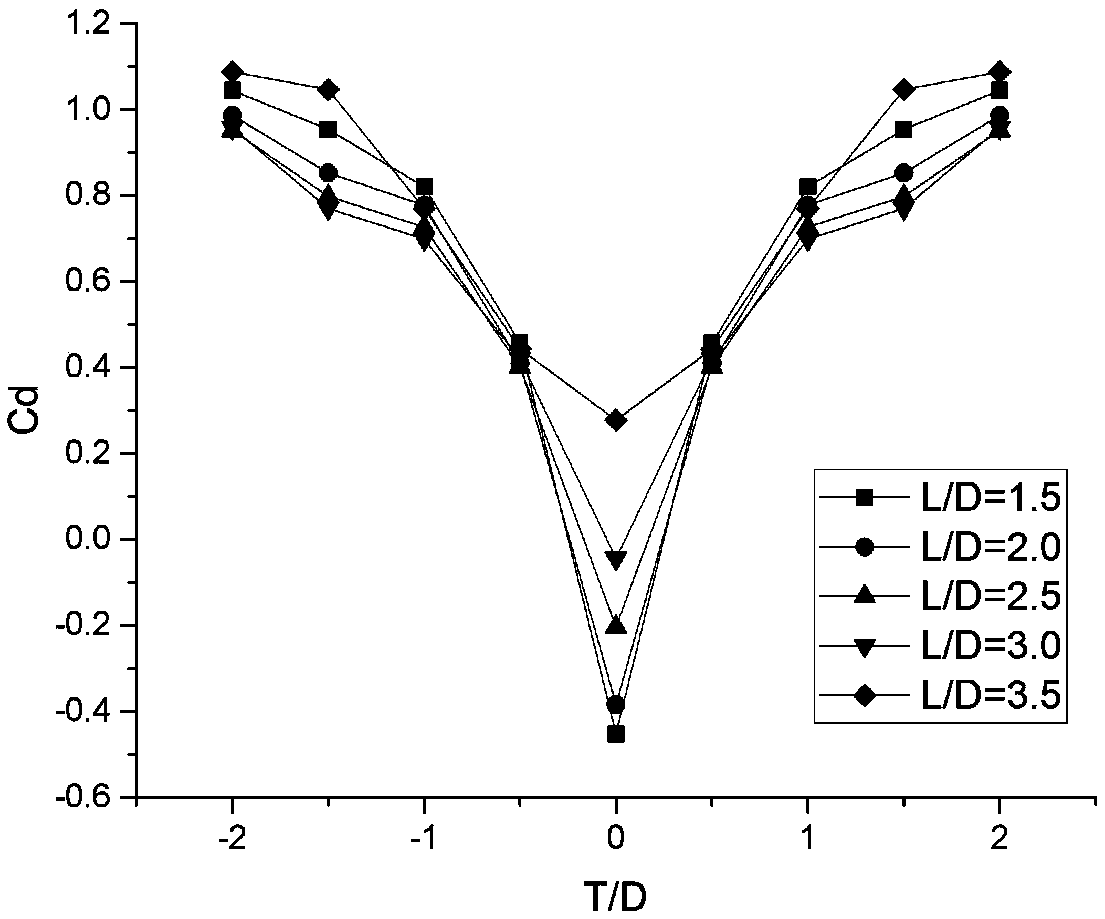Wake flow elastic support cylinder galloping analysis method considering motion aerodynamic force
An elastic support and aerodynamic technology, applied in the field of simulation analysis, can solve problems such as insufficient induced vibration
- Summary
- Abstract
- Description
- Claims
- Application Information
AI Technical Summary
Problems solved by technology
Method used
Image
Examples
Example Embodiment
[0086] Simpson first predicted the amplitude of the transmission line by the Runge-Kutta method, and used a simple approximate analytical function without considering the aerodynamic damping to conduct a preliminary nonlinear study of the wake galloping vibration. In the 1980s, Allnutt et al. used linear theory to predict the existence of a limit cycle centered on a dynamic equilibrium position, and expressed the limit cycle as a sine function. After that, Price obtained the spatial distribution of the average lift-drag coefficient of the transmission conductor under the wake through the wind tunnel test, and used the quasi-steady method including the aerodynamic high-order term to represent the aerodynamic force of the downstream conductor, and established a wake galloping theoretical model to study Wake gallop.
[0087] The present invention will first simulate the lift-drag coefficient of the downstream cylinder under a specific spacing ratio, and obtain the load of the wir...
PUM
 Login to View More
Login to View More Abstract
Description
Claims
Application Information
 Login to View More
Login to View More - R&D
- Intellectual Property
- Life Sciences
- Materials
- Tech Scout
- Unparalleled Data Quality
- Higher Quality Content
- 60% Fewer Hallucinations
Browse by: Latest US Patents, China's latest patents, Technical Efficacy Thesaurus, Application Domain, Technology Topic, Popular Technical Reports.
© 2025 PatSnap. All rights reserved.Legal|Privacy policy|Modern Slavery Act Transparency Statement|Sitemap|About US| Contact US: help@patsnap.com



